 by Kimberly Blackford
by Kimberly Blackford
Swimming pools are private havens that provide the perfect escape in the backyard of homes.
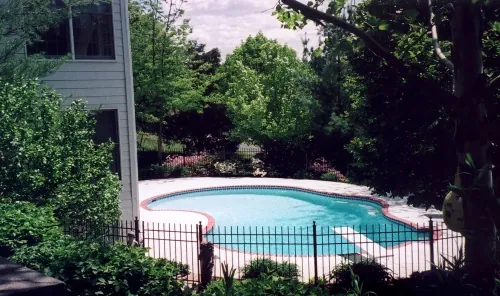
Today's pools are constructed to blend in with any outdoor space, while offering complete relaxation and entertainment for friends and family. With so many design and construction options to choose from, your dream pool can be a time-consuming and overwhelming task. Before jumping into purchasing a pool, you'll need to decide what type of pool best fits your family's lifestyle and needs.
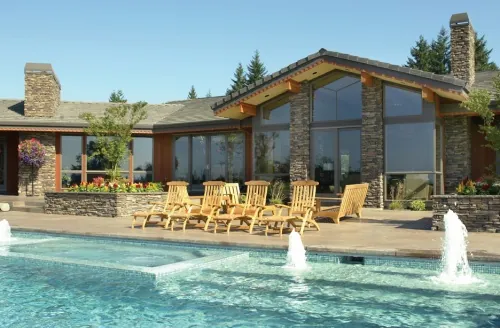
View this House Plan
View Other Luxury House Plans
ABOVE GROUND POOLS
Above ground pools are generally less expensive than in-ground pools. The mobility of these structures often attracts homeowners because they can easily be moved to a new location or sold if you feel it?s taking up too much space. The most common above ground pools are made of steel, aluminum or resin siding. Installation of basic above ground pools can be a relatively easy do-it-yourself weekend project. Most homeowners do hire a professional to install more complex dream pools. And because above ground pools usually take up less space than in ground pools, they are a perfect choice for smaller yards. Some homeowners are concerned that an above ground pool will take away from the appearance of their yard. However, today's pools come in a variety of shapes and sizes to fit even the smallest spaces. Installing a deck or landscape around the pool can also create a more inviting feel.

The first step in installing an above ground pool is leveling off the ground to form a flat surface. Then a perimeter track is assembled to support the outer wall, sand is spread in the pool area, and plumbing is installed. The vinyl liner is then secured to the outer wall, water is added inside the pool, and then the liner is smoothed over and fastened in place. Finally, the pump and filtering system is installed and the pool is ready to go! It's that simple!
INGROUND POOLS
In ground pools are typically chosen for their durability and flexibility. They can be designed to fit any shape or size yard and can be constructed to different depths to fit your specific needs ? from swimming laps to playing volleyball. Although in-ground pools cost more to build than above ground pools, they can add more aesthetic value to a home and can be a great investment. The complexity of building an in-ground pool can affect the time it takes to complete the project, but the ability to custom-design these pools to fit your lifestyle and needs is usually well-worth it. Diving boards, water fountains, custom lighting and slides are among some of the features that can be added to make in-ground pools a vacation retreat right in your backyard. However, it is recommended that you work with your contractor to find the best construction option for your yard space:
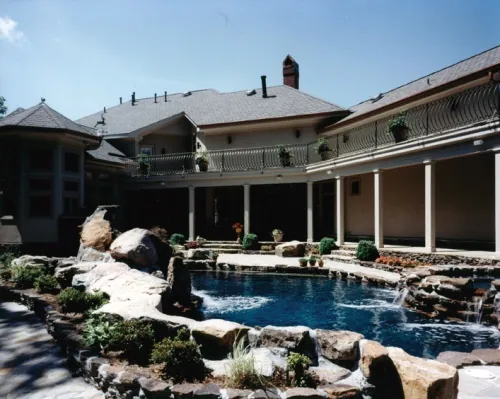
View this House Plan
View Other Craftsman House Plans
-
Vinyl-Lined Pools ? Vinyl-lined pools are a great option for those that live in cold climates. The only thing that you have to do when it cools down is drain the pool and cover it. These pools are very similar to above ground pools, at least structurally, and are the easiest type of in ground pool to build ? usually taking one to three weeks to construct. However, vinyl-lined pools are not as durable as other in ground designs. The biggest investment you'll have to face is replacing the vinyl liner about every ten years. These pools are built using a structural wall made of plastic, wood, or metal. Then a custom-made vinyl liner is secured to the structural wall and sand is added to the floor of the pool.
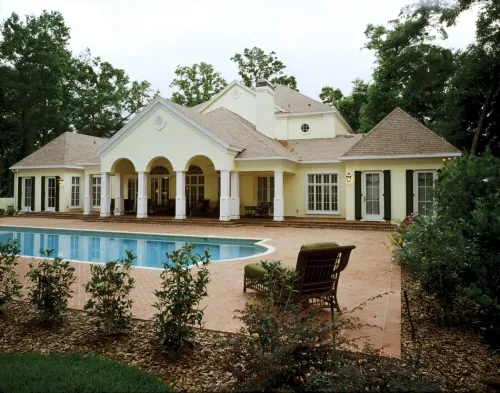
View this House Plan
Fiberglass Pools ? Although the cost of installing a fiberglass pool can be very expensive, homeowners generally experience lower maintenance costs over the years. Fiberglass pools do not require the pool liner to be replaced after a few years, and they generally don't need as many chemicals as concrete pools. Also, fiberglass pools have the ability to flex and absorb shock, so this type of pool may be the perfect option for those living in earthquake-prone areas. Fiberglass pools are built in a factory before being delivered to your home. In fact, these pools are made from fiberglass-reinforced plastic that somewhat resemble a bathtub when it arrives at your home. Before it is installed, a construction crew digs a hole, lays the plumbing and lowers the structure into the hole. Then the pool is leveled off before the plumbing is connected.
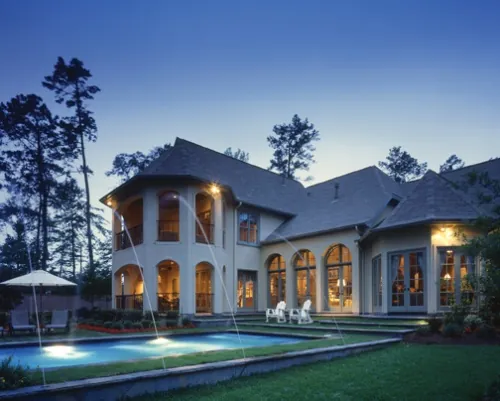
View this House Plan
-
Concrete Pools ? Concrete pools are one of the most durable, but difficult and costly types of pools to build. However, these pools can be customized in any shape or size to fit your landscape. In addition, you have the ability to paint the concrete in any color of your choice and add pebbles or plaster in a range of colors to add an elegant touch. Concrete pools are poured on site using a grid of steel reinforcing rods (rebar) that is placed in the ground as a framework for the pool walls. Then the plumbing is installed and the concrete is poured into conventional wooden forms.

View this House Plan
-
Gunite Pools ? As the popularity in gunite pools has grown over the years, traditional concrete pools have fallen by the way side. Concrete pools and gunite pools are built in a similar fashion, but the ease of building a gunite pool has made this option more well-known. To build a gunite pool, the construction team digs a hole and lays a framework of rebar around the surrounding pool area. Then a thick coating of gunite, a mixture of cement and sand with water, is sprayed around the rebar. Next, gunite is smoothed with trowels and sits for about a week before a smoother surface is added to create the finishing touch. Several finishes include tile, plaster, paint, aggregate or even fiberglass. Gunite pools and concrete pools typically take about 12 weeks to build, but the durability and strength of these structures are usually worth the wait.
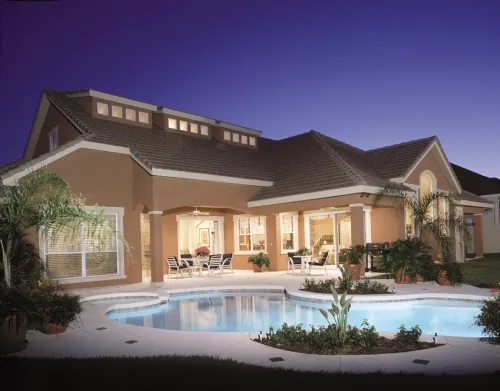
View this House Plan
Take your time deciding which type of pool is right for you. The type of pool you choose will affect the material, cost and time it takes to construct your swimming pool. Start by getting referrals from your family and friends and seeking quotes and advice from different builders. Once your dream pool is constructed, you will be basking in the sun in a coat of cool water with your family and friends!

View this House Plan
Here are some related articles:
Save this article to:
back to top